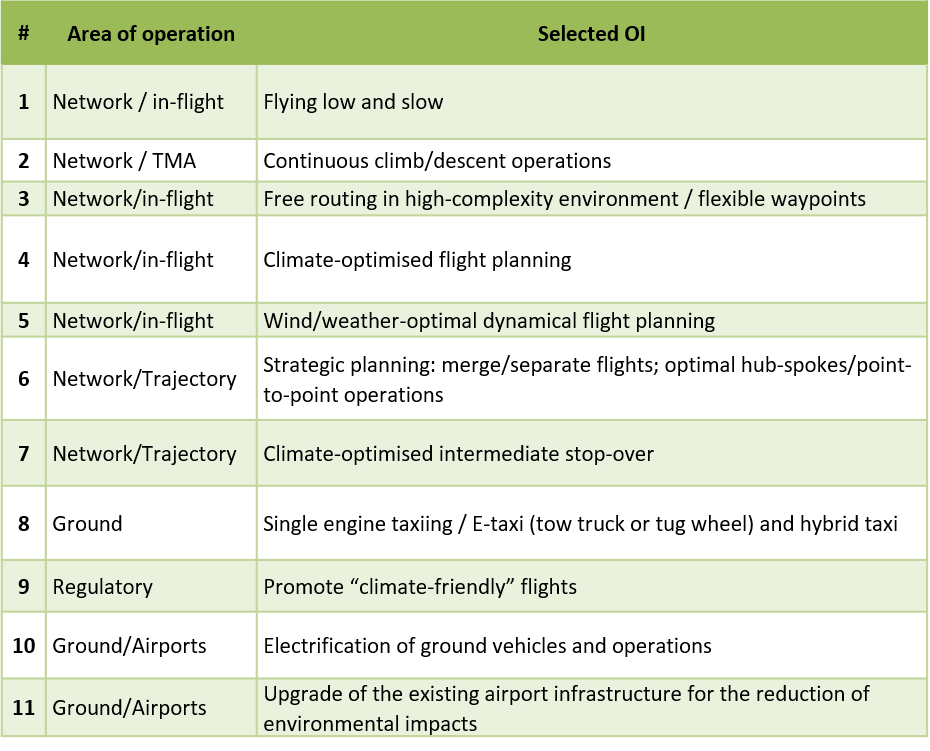After one year from the project beginning, the ClimOP Consortium has concluded the first stage of desk research of the potential operational improvements (OIs) to mitigate the climate impact of the aviation sector.
This analysis started with the identification of all the proposed OIs discussed in the literature and of the performance indicator to quantify the effect of these OIs. Subsequently, the ClimOP consortium narrowed down these OIs to a list of 11 (Table 1). The criteria to select these 11 OIs take into account different factors, such as the expected impact on climate, the maturity of the technologies which enables the OIs and the capability and feasibility of their implementation, the cost/benefit ratio and the scientific relevance for the ClimOP partners.

Table 1. Promising operational improvements for the aviation sector selected by the ClimOP consortium.
As a result, the selected OIs cover four key areas of operations in the aviation sector:
- Ground operations: advanced towing techniques to lower aviation emissions;
- Terminal Maneuvering Area (TMA) operations: more efficient arrival- and departure-related activities;
- Network and in-flight operations: optimized and well-integrated flights trajectories;
- Operations at a regulatory level: rules to sustain the implementation of greener aviation operations.
During the next months, ClimOP will develop models to assess the impact these 11 OIs have on climate and aviation stakeholders. This will drive the Consortium through the development of a homogeneous set of indices that will set a baseline for the comparison of the different OIs. At the end of this phase, ClimOP will be able to better identify the operational improvements with a higher capability to reduce the climate impact of aviation.
Do you want to know more about ClimOP activities? Follow us on Twitter and LinkedIn to be always updated!




